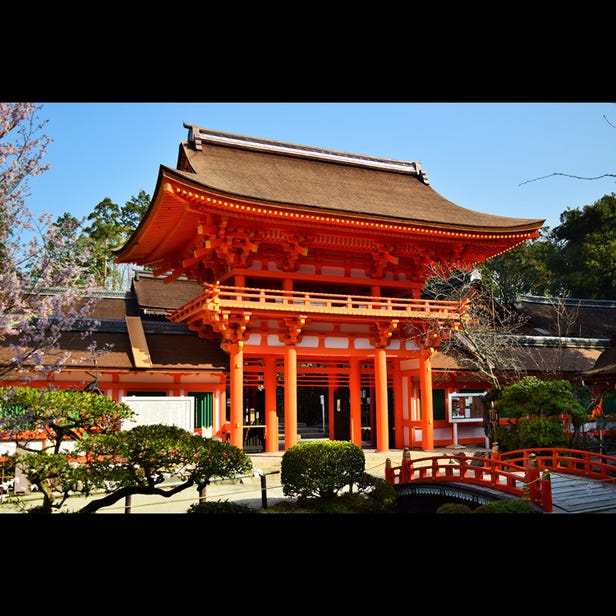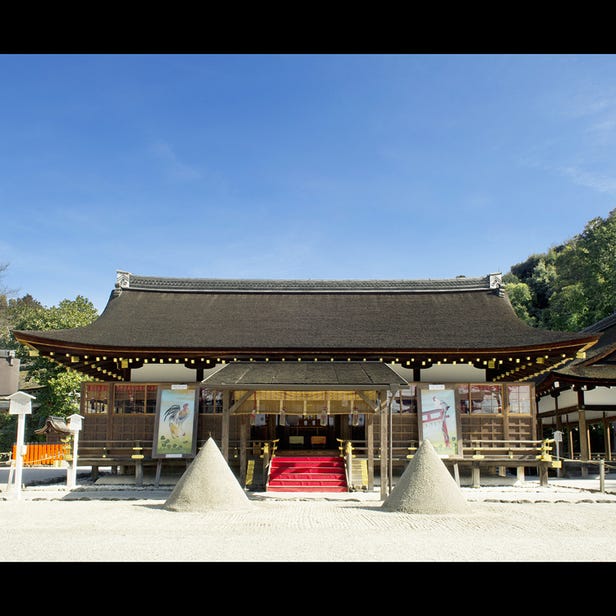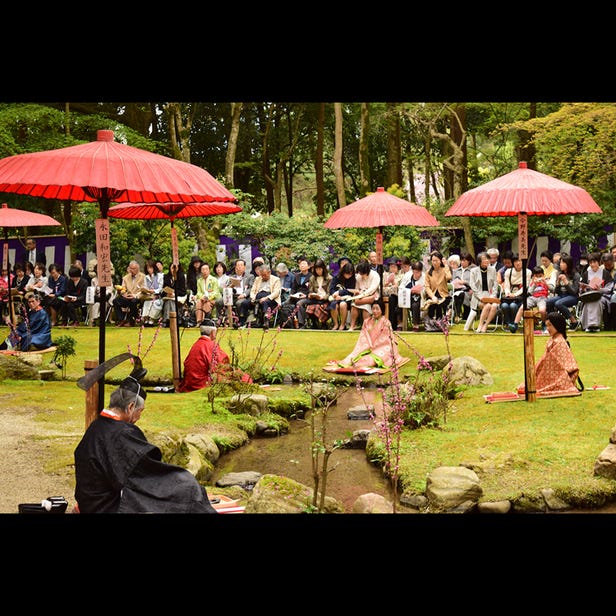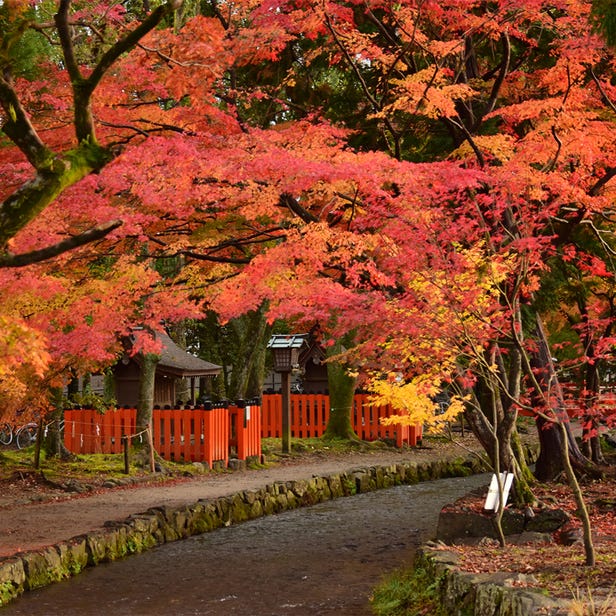Kamo-wake-ikazuchi-jinja Shrine (Kamigamo Shrine)
Description
Kamigamo-jinja Shrine, as it is most commonly known, is officially called Kamo-wake-ikazuchi-jinja Shrine where the deity Kamo-wake-ikazuchi-no-kami is enshrined. It is said that the origins of the shrine reach back approximately 2,600 years ago and that the foundations for the current shrine were established in 678. This makes it the oldest shrine in Kyoto. The entire shrine precinct, which covers approximately 670,000 square meters, is registered as a World Heritage Site by UNESCO as one of the Historic Monuments of Ancient Kyoto. Many of its structures and properties are also designated as National Treasures or Important Cultural Properties. Located further down the Kamo-gawa River is Kamomioya-jinja Shrine (Shimogamo-jinja Shrine) and the two shrines are known collectively as “Kamo-sha Shrine”. Together they host the Aoi Festival (Kamo Festival), which is one of the three largest festivals in Kyoto.
・ Kamo-jinja Shrine has been hosting Kamo Festival (Aoi Festival) since about 1,500 years ago and it is a traditional event that was even featured in the Tale of Genji
Kamo Festival (Aoi Festival) is held every year by Shimogamo-jinja Shrine and Kamigamo-jinja Shrine on May 15. The festival prays for the peace of the country and the well-being of its people and makes offerings to the great deity. During the Roto no gi Ritual, a procession accompanies a messenger sent by the Emperor to visit Shimogamo-jinja Shrine and Kamigamo-jinja Shrine. This spectacular procession is made up of over 500 people dressed like nobles in the Heian Period, along with 36 horses and 4 cows.
・Tatezuna and the origins of purifying sand
After passing through the second torii gate of the shrine, visitors will see two mounds of sand cones, which are called Tatezuna. These represent the divine mountains from where the shrine's deity, Kamo-wake-ikazuchi-no-kami, descended. These are said to be the origin of purifying sand, which is scattered at the northeastern quarter that is said to be unlucky as well as the custom of placing mori-shio (small cones of salt) at the entrance of establishments and homes.
・Katayama-miko-jinja Shrine has been well-known since the Heian Period as a shrine for marriage and matchmaking
Katayama-miko-jinja Shrine (commonly known as Kataoka Shrine) is the most important sessha (sub-shrine) in Kamigamo-jinja Shrine and is located near Ro-mon Gate. It worships the goddess Tamayorihime-no-Mikoto. It is said that Murasaki Shikibu, an author from the Heian Period, also visited the shrine to pray for a happy marriage, and the waka poem she wrote about Kataoka Shrine is featured in Shin Kokin Wakashu (New Collection of Poems Ancient and Modern).
・Kamo Kyokusui no En is a traditional event that allows visitors to experience the elegance of the Heian period
Kamo Kyokusui no En is an event held every year on the second Sunday of April. It takes place in Shokei-en Garden, where the Saio-dai (a woman representing an imperial princess) from the previous year's Aoi Festival announces a theme. In response, poets must write and read a waka poem on the spot. Open air seats are available where visitors can sit and enjoy tea.
Location Information
-
- Address
-
339, Kamigamomotoyama, Kita-ku, Kyoto-shi, Kyoto, 603-8047
-
- Nearest Station
-
Kitaoji Station
・ Karasuma Line
10 minutes by bus
-
- Phone Number
-
075-781-0011Available languagesonly in Japanese
-
- Hours
- 8:30am - 4:00pm
-
- Closed
- None
-
- Public Site
- Official Site
Recommended Spots in Area
- Visiting
- Lodgings
-
 Kyoto Botanical GardensGinkakuji Temple, Nanzenji TempleZoos, Aquariums & Botanical Gardens
Kyoto Botanical GardensGinkakuji Temple, Nanzenji TempleZoos, Aquariums & Botanical Gardens -
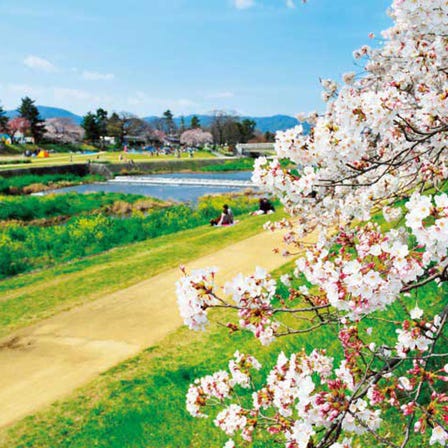 Nakaragi RoadKinkakuji Temple, KitayamaOther Nature
Nakaragi RoadKinkakuji Temple, KitayamaOther Nature -
 Imamiya Jinja ShrineKinkakuji Temple, KitayamaShrines
Imamiya Jinja ShrineKinkakuji Temple, KitayamaShrines -
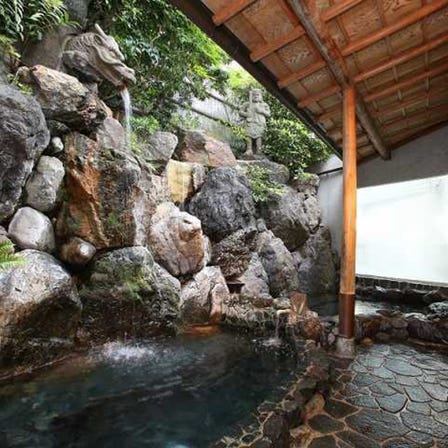 Funaoka OnsenKinkakuji Temple, KitayamaHot Springs (Onsen) & Bath Houses (Sento)
Funaoka OnsenKinkakuji Temple, KitayamaHot Springs (Onsen) & Bath Houses (Sento) -
 Daitoku-ji TempleKinkakuji Temple, KitayamaTemples
Daitoku-ji TempleKinkakuji Temple, KitayamaTemples -
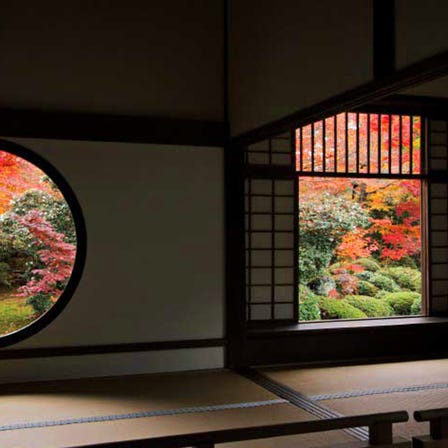 Genko-an TempleKinkakuji Temple, KitayamaTemples
Genko-an TempleKinkakuji Temple, KitayamaTemples
-
Funaoka Onsen Guest HouseNijo Castle, Kyoto Imperial PalaceJapanese Guest Houses (Minshuku)
-
Maruya Kamogawa TerraceKinkakuji Temple, KitayamaJapanese Guest Houses (Minshuku)
-
Guesthouse TenjinNijo Castle, Kyoto Imperial PalaceJapanese Guest Houses (Minshuku)
-
Daisenji Lodge IngNijo Castle, Kyoto Imperial PalaceVacation Homes
-
EikiKinkakuji Temple, KitayamaVacation Homes
-
Hostel Sui KyotoNijo Castle, Kyoto Imperial PalaceJapanese Guest Houses (Minshuku)













